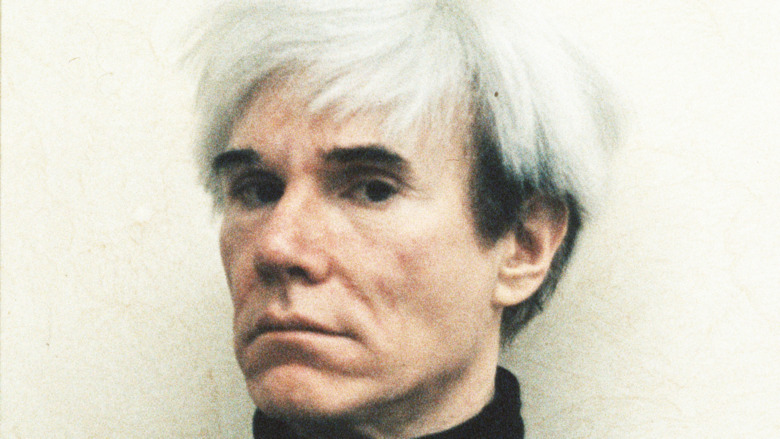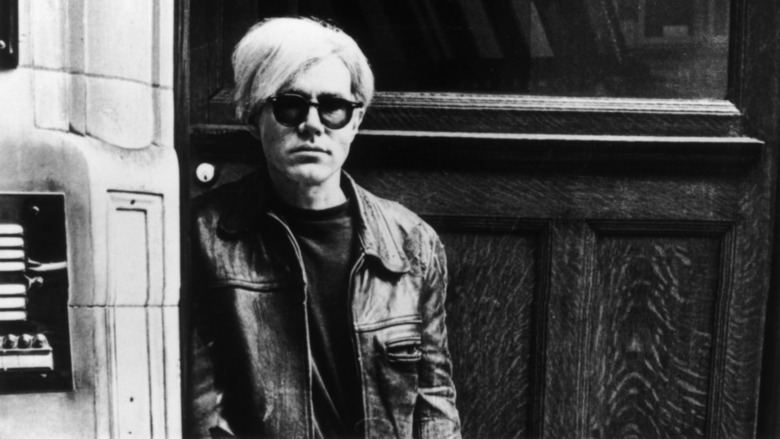This Is How Much Andy Warhol Was Worth When He Died
Andy Warhol, the man who would become known as the Father of Pop Art, wasn't always the wealthy, eccentric icon who created work in the 1970s and '80s that can now rake in more than $100 million per painting, per NBC News. In fact, Warhol came from humble beginnings. His parents were poor immigrants from what is now Slovakia. Warhol's father, Ondrej, supported Andy, Andy's two older brothers, and their mother by working as a coal miner and construction worker in Pittsburgh.
Before Ondrej died when young Andy was just 13 years old, he impressed upon the young Warhol that it would be his responsibility to pull the family out of their working class status. It was a message that Warhol seemed to have taken to heart as he excelled in school and won awards before entering the Carnegie Institute of Technology (now Carnegie Mellon University) for commercial art. Upon graduation, Warhol earned a good living by drawing shoes for fashion houses and magazines, as well as working in advertising for clients such as Dior and Tiffany & Co., before making his way into the art world full-time and earning a fortune. At the time of his death, Warhol had a net worth equal to $220 million, adjusting for inflation and accounting for the value of his artwork, according to Celebrity Net Worth. What happened to that money?
What happened to Andy Warhol's fortune?
When Andy Warhol unexpectedly died on February 22, 1987, from complications related to gallbladder surgery, it set into motion the requirements of his will, as well as a number of legal conflicts among those in Warhol's inner circle. The will dictated that Warhol's entire estate (aside from a few moderate gifts to his brothers) would endow a foundation, according to Artlyst. The many thousands of items in Warhol's possession took Sotheby's nine days to auction, but by the end, more than $20 million was raised for the establishment of the Andy Warhol Foundation for the Visual Arts.
The foundation had a difficult start with legal battles involving Warhol's executor, employees of Warhol's studio ("The Factory"), and his brothers, The Washington Post reported at the time. And, despite mismanagement of the foundation, as The New York Times reported, it was still able to found the Andy Warhol Museum in Pittsburgh to house nearly 10,000 works of art by Warhol.
Even though Warhol created and collected art worth hundreds of millions of dollars that would continue to fund others well into the future, he always remembered his past. "Certainly, he was a social climber," Anthony E. Grudin, author of Warhol's Working Class: Pop Art and Egalitarianism, told CNN. "But when he talked about his background, he was pretty clear ... that his father was a working man who died from the hardship of his job, and that he was raised in poverty and that his mother sold tin-canned artworks door-to-door."

